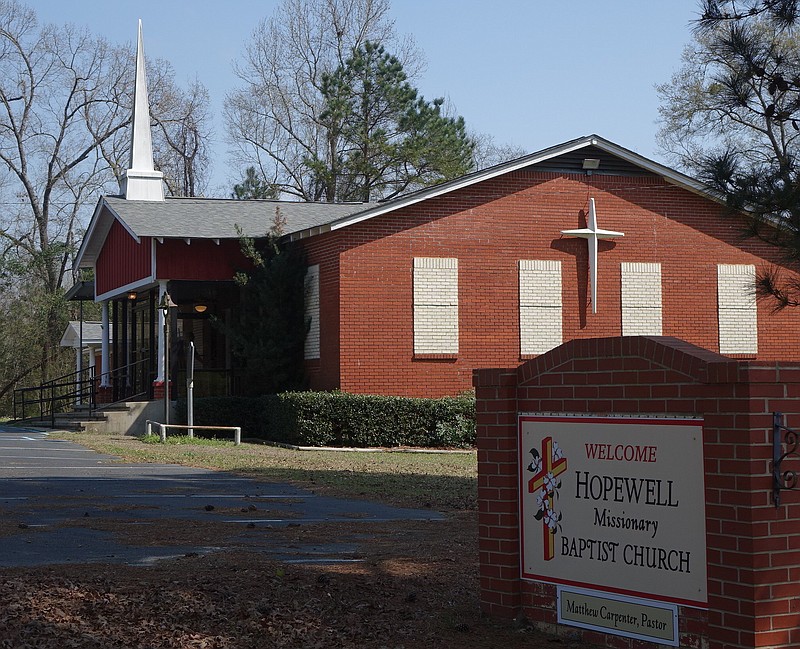If any country church could be called charming, this one is western Cass County might be it.
Hope Missionary Baptist stands just a few yards down County Road 2321 in the Sardis Community, three miles east of Hughes Springs.
A turn of the car's steering wheel at the colorful brick sign will bring you under a shade tree at the front of the church. The welcome lights seen through the floor-to-ceiling glass panes of the entry and reception areas are warm.
You will have already noticed the historical marker standing outside by the church bell. The marker tells a notable history of service going on 146 years.
The church is also located along a famous road, the Jefferson Ferry Road, so called because that's where it ended up in those days.
The Sardis Cemetery is here also. It has an elegant entryway, too. There's also the pastor's home nearby.
The red church and its setting give a sense of peace.
The church was charted as the Black Cypress Baptist Church in July 1861. And its story begins right there, for the community of Sardis had already been established 10 years earlier. Yet it took a decade before a church was built. What had taken so long?
The community already had a general store, gristmill, blacksmith and post office. Now, three months after the start of the Civil War and with Lincoln having been elected president in March, the community decided to organize a church.
Member Gary Watson, in his history of the church, asks the question, "Might the community have decided to come together in troublesome times?"
Some of the early Sardis community family names included Glass, Strickland, Espey and Goodson. Some of the church family founders were named Echols, Massey, Crockett and Espey.
Through the years, the church seems to have served and comforted well. Its name was changed to the Hopewell Missionary Baptist Church in 1870, but records do not indicate why.
Church records do give an awareness of the times, however. For example, in 1875 Joel Osbin was excluded from the congregation for "profane swearing."
Then, in the 1890s, members getting charged for dancing and drinking were rather common. Hughes Springs had saloons, and if a member couldn't resist, that person had to come before the congregation for "acknowledgement" in order to be received again.
In fact, the church board agenda had an appointed time before each business meeting for "acknowledgements."
When Dr. W. A. Scott asked the church if he could build a house for a drug store on church property, the congregation approved- but did not permit the doctor to "sell alcohol stimulants as a beverage or any bitters of any kind."
The church was well-organized. It elected a new pastor each fall and held regular revivals. During a great one in July 1917, 53 people were baptized and added to the church.
Those baptisms might have been another "troublesome times" reaction, for 1917 was the year the United States joined the Allies in World War I.
Some community stories about the church were that singing sometimes would last late into the night-so late that local boys would be needed to pump the billows pedal of the organ when the organist tired.
The church was bricked in the 1960s, given a fellowship hall in the 1970s, and heating and air conditioning in the 1980s. It gained its historical marker in 2007.
Now, the church has 20 to 30 people in attendance each Sunday.
It has many more who drive by and notice a pleasant and pretty country church that still serves Sardis, a community that built the church but does not exist any longer.

